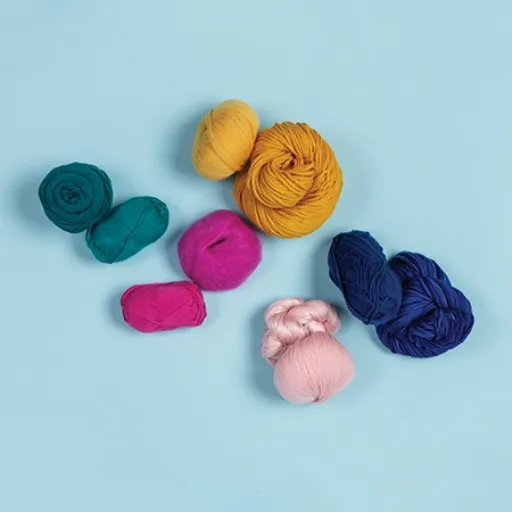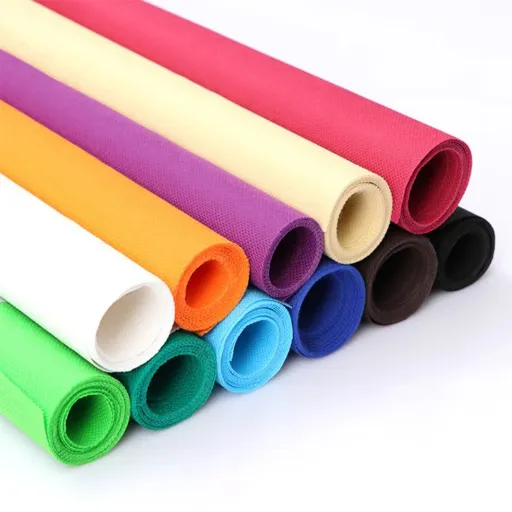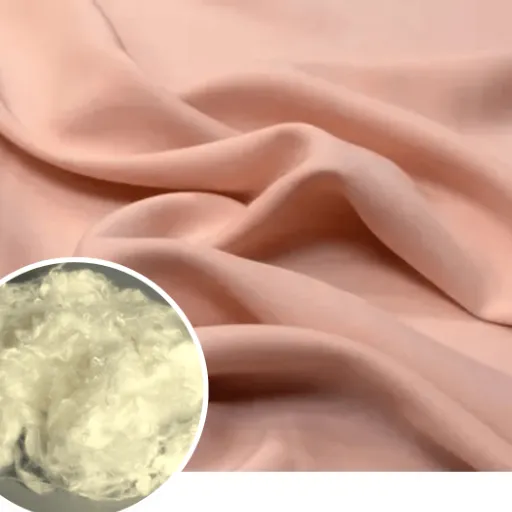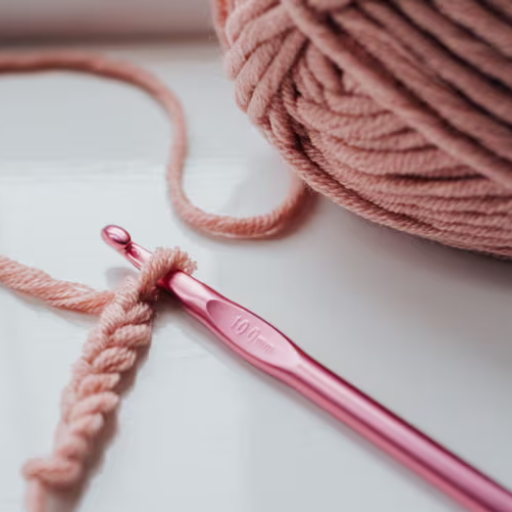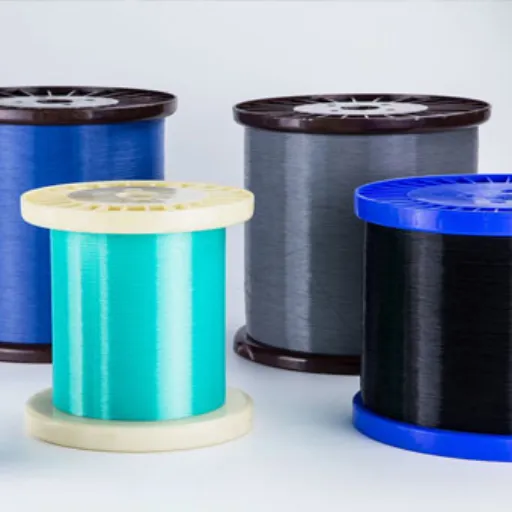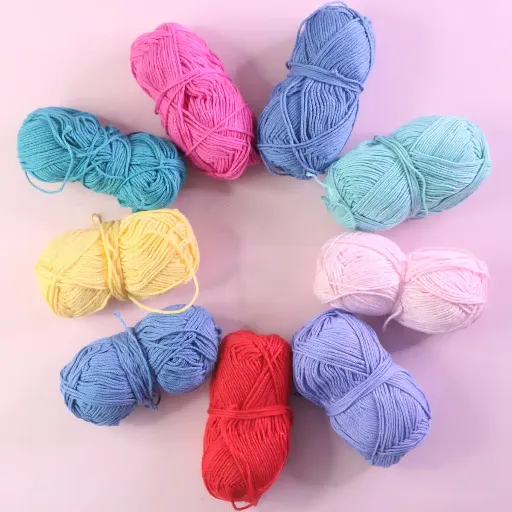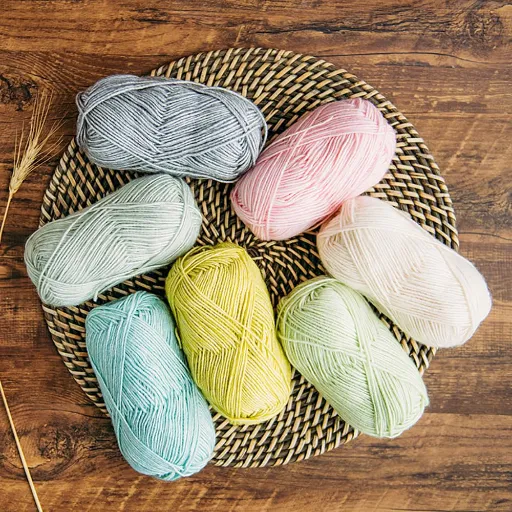Crochet enthusiasts will let you know that the sort of yarn can make or break a project. There are endless choices available, but two very popular ones are acrylic and cotton, both having very different properties and both very versatile. Picking one over the other comes down to factors such as feel and texture, durability, price, and what it is suited for in the project. To help you make an informed decision, this guide compares these materials in depth so that you can choose the yarn your project best demands and your personal tastes. Whether you are working on apparel that keeps you warm or fine and delicate home décor, an understanding of both acrylic and cotton yarn gives you a winning edge in your crochet undertakings.
What are the Differences Between Acrylic and Cotton Yarn?
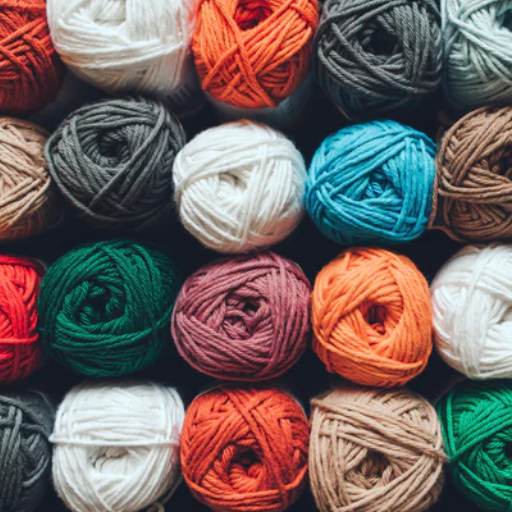
- Composition: Simply put, acrylic yarn results from synthetic fibers, whereas cotton yarn is a product made from natural cotton plants. The different origins here make all the difference about how they feel and perform.
- Texture: Compared to cotton, acrylic is much softer and smoother, whereas cotton tends to be matte, more structured, and firm in hand, which balances well with defined stitch patterns.
- Durability: Acrylics resist wear and tear quite well, but they tend to pill as time passes. Cotton, on the other hand, resists wear but lacks much stretch; thus it wears out faster under repeated stressing.
- Care Requirements: Acrylic yarn is considered low-maintenance, with many items suitable for machine washing and quick drying- it is a yarn for everyday use. Cotton yarn, though usually machine washable, washes inappropriately and may shrink or lose shape during handling.
Knowing the differences helps you to truly choose the yarn that best suits the need of your project.
Understanding the Properties of Acrylic Yarn
- Fiber Composition: Truly, the very base of any acrylic yarn begins with polymerization of acrylonitrile monomers, often those of other monomers being blended in to help flexibility and softness.
- Durability: Acrylic yarns have high durability and resist wear perfectly. They remain strong even after long periods of use, with a higher suitability for washable clothing, blankets, and home decor.
- Weight and Density: Being synthetic, acrylic yarn is very light, and felt for comfort and ease of carrying.
- Elasticity and Shape Retention: The yarn has an intermediate value of elasticity and maintains better shape retention art mode through wearing and washing; however, this is not as much as that of natural wool.
- Thermal Properties: The thermal properties are good; it traps heat and is, therefore, often used as a substitute for wool for making cold-weather garments.
Characteristics of Cotton Yarn
- Breathability: Cotton yarns let air pass through the fabric. This makes it best for the making of garments meant for a warm or humid climate which will keep the wearer cool.
- Moisture Absorption: A property of cotton yarn is that it is hygroscopic, water absorbing; it can, however, retain large amounts of water in quite a short time. Cotton yarns can absorb water weighing even 27 times more than their weight and so are the best options for towels, bathrobes, and summer clothes.
- Softness: Cotton yarn is soft and friendly to the skin. This explains its application, mainly for making baby clothes, bedding, towels, and other items that require a level of comfort.
- Durability: Cotton has much tensile strength that cotton yarn products can bear regular wear and washing without much deterioration. This strength is well adapted for the making of very old textiles like denim and heavy-duty workwear.
- Hypoallergenic: Cotton yarn does not usually irritate people and rarely causes allergic incidents- it becomes appropriate for people who have sensitive skin or allergies.
- Thermal Conductivity: While the cotton isn’t as warm as wool, it actually sets a moderate temperature equilibrium that is used in different products with varying layers to provide warmth and comfort.
Comparison of Yarn Fibers: Cotton vs Acrylic
|
Parameter |
Cotton |
Acrylic |
|---|---|---|
|
Source |
Natural (plant-based) |
Synthetic (man-made fiber) |
|
Texture |
Soft and breathable |
Smooth and less breathable |
|
Durability |
Moderate, wears out over time |
High, resistant to wear and tear |
|
Warmth |
Provides moderate warmth |
Provides superior warmth |
|
Moisture Absorption |
High, absorbs moisture well |
Low, retains less moisture |
|
Drying Time |
Slow drying |
Fast drying |
|
Weight |
Lightweight |
Lightweight |
|
Color Retention |
Natural tones, may fade over time |
Retains vibrant colors |
|
Maintenance |
Requires gentle washing |
Easy to wash |
|
Cost |
Typically more expensive |
Generally affordable |
|
Environmental Impact |
Renewable but water-intensive production |
Non-renewable, petroleum-based |
|
Biodegradability |
Biodegradable |
Non-biodegradable |
|
Common Applications |
Apparel, home textiles, medical uses |
Knitting, winter clothing, upholstery |
Which is Better for Your Next Crochet Project: Cotton or Acrylic Yarn?
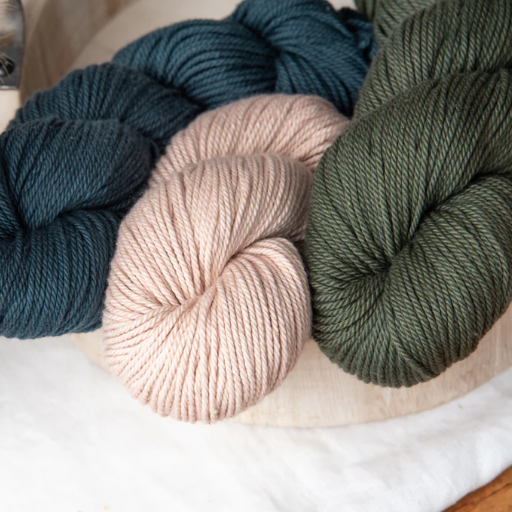
Depending on the needs of the particular project, a decision is made between cotton or acrylic yarn.
- Select Cotton Yarn for a breathable, light fiber suitable for applications such as summer clothes, dishcloths, or even decoration. Cotton is rigid, soft, and maintains its shape well; thus, it is good for construction-intensive projects and those which will be washed frequently.
- Select Acrylic Yarn for projects that keep you warm-my blankies, scarves, and winter wristwarmers. Its cheap prices and large variety of colors make it suitable for large or inexpensive projects.
Benefits of Using Acrylic Yarn
- Affordability: Acrylic yarn is more affordable relative to natural fiber yarns such as wool or cotton and in fact presents the best option for large-scale projects and for crafters on a budget. For example, the average price for one skein of acrylic yarn usually falls between $3 and $5, which is thus far lower in comparison with premium wool alternatives.
- Wide Range of Colors: This yarn comes in a large range of bright colors and shades. That means that creators have no trouble matching an intended look without having to go through additional dyeing processes. The availability of such a variety gives users the freedom to make anything from décor items to personalized gifts.
- Durability: Acrylic yarn is highly durable and resists wear and tear due to its synthetic composition. It is far more resistant to stretching and pilling than natural fibers; hence it provides very long life to finished goods.
- Ease of Maintenance: These days acrylic yarns are made to be machine washable and drying is very quick; thus, requiring less time and effort for upkeep. This nature of the acrylic yarn makes it suitable only for frequently used items such as blankets, sweaters, or children’s clothing.
- Hypoallergenic Properties: This is to say that in case of lanolin allergy, acrylic yarn becomes a real alternative since it contains no lanolin, unlike wool.
In all these qualities, acrylic yarn becomes an ideal and versatile material to work with, balancing performance, aesthetics, and practicability.
Advantages of Cotton Yarn in Crochet
- Durability and Strength: Cotton yarn is very durable and is, therefore, being used for items that undergo regular use or have to be washed. With its tensile strength of about 26-30 MPa, cotton is in a category that stands much better than most other natural fibers for holding its structure through time.
- Absorbent and Breathable: Cotton yarn is a superior absorbent and can seize almost as much as 27 times its own weight in water, making it ideal for making dishcloths, towels, and summer clothes that need to wick moisture and be breathable.
- Heat Resistance: Cotton yarn can hold up against high temperatures, making it useful in projects such as potholders, coasters, and placemats. This heat resistance also allows you to clean and sterilize them in boiling water if necessary.
- Soft and Comfortable Texture: Cotton yarn, therefore, provides a smooth and soft texture, whereas comfortable items are gentle to the skin. This is convenient for making baby clothes, blankets, or accessories for individuals with sensitive skin.
- Natural and Eco-Friendly: Cotton is not only biodegradable but also renewable, hence an environmentally conscious way to go in crafting. Organic kinds of cotton cut down on the use of chemicals in the growing process, assuring safer materials to work with in an environmentally friendly manner.
Can You Use Acrylic and Cotton Together?
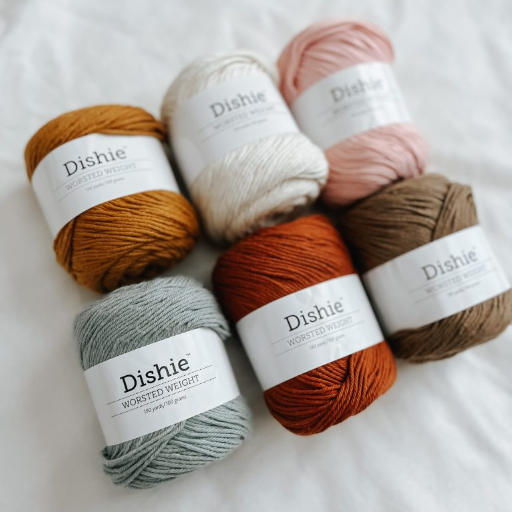
Yes, we can use acrylic and cotton pair in one crochet project. Such a pairing gives us from each world—cotton lends strength and breathability, while acrylic lends softness, stretch, and warmth. Remember, while mixing acrylic and cotton in patterns, acrylic is generally machine-washable, dries very fast, whereas cotton tends to shrink a little or needs slightly more care. Perfect for blankets, garments, and accessories where endurance and utility matter.
Creating Cotton and Acrylic Yarn Blends
In mixing yarns of cotton and acrylic, consideration of the different handcrafted material properties of the two fibers is an important factor toward the optimization of the blend’s performance. Cotton is said to absorb the stuff of breath, moisture, and to endure, which would make it good in the warmer season or products that require several washes. Acrylic, therefore, stands as a great synthetic alternative for light, resilient, and insulating properties- the thicker it is, the more warmth it will hold and dry quickly, and it will not keep pressed creases.
Using these fibers in different proportions makes it possible for makers to engineer yarns for specific purposes. For example, higher cotton content in the blend means more softness and breathability; such yarn is perfect for summer outfits or light bedding. Blends with more acrylic are emphatic on stretch, strength, and shape retention, making them useful for winter accessories or hard-wearing daily-use products.
How Acrylic and Cotton Work Together in Projects
Acrylic-cotton blends make use of the aid of both fibers to produce a material endowed with great versatility and efficiency for several purposes. The cotton end of the synergy offers natural softness, breathability, and absorbency to the material, while the acrylic is light, durable, and slightly wrinkling-resistant. Thus, such a blend proves especially useful in those projects that try to balance hand comfort and long-term performance, such as apparel, home textiles, and other craft-related materials.
What is the Best Way to Use Acrylic Yarn?
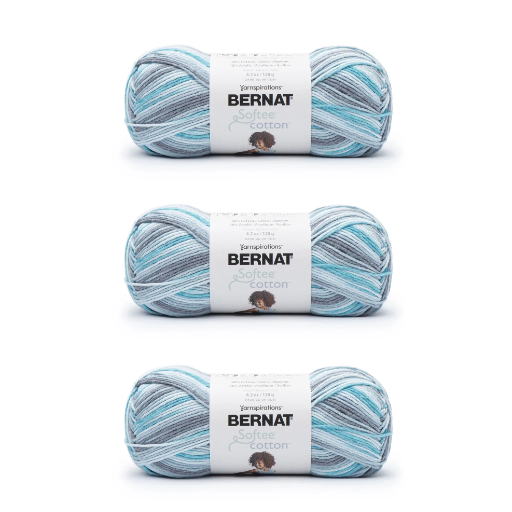
Acrylic yarn offers all-purpose applications where durability is essential, along with more affordable products, easier maintenance, and quicker work. The utmost application is in clothing-making, including sweaters, hats, scarves, and gloves, gross or minute items weighted for warmth. For home decoration, acrylic yarns enjoy almost equal popularity with cotton-based yarns, and they are the best for suppliers in pursuit of fade resistance and ultra-color fastness. With so many good qualities, acrylic is a blessing for beginner knitters and crocheters; it is available everywhere at a very reasonable price and is also easy to work with. Being safe to put in the washing machine, it is the perfect yarn for making items that are expected to go through a lot of fair use.
Ideal Projects for Acrylic Yarn
Therefore, acrylic yarn is reputedly versatile and can bring very high value to the project by way of durability, brightest colors, and affordability. Due to the yarn’s inherent warmth, one of the common uses for it is to make winter accessories such as sweaters, scarves, and mittens. Because it is lightweight, it is also suitable for finer work such as shawls or lacy wraps, wherein fabric flexibility is a prerequisite.
For home décor projects, acrylic yarn is a very good alternative for producing throws, cushions, or ottomans that will withstand fading and wear, even with heavy use or sitting under the sun. More adventurous creatives can design colorful rugs or wall hangings that exploit acrylic’s rich color palette and affordability to realize more expansive and affordable projects.
When to Choose Acrylic Yarn Over Cotton
Where items need washing regularly, acrylic throws are worth considering because of their durability, relatively low cost, ease of care, permanence, and softness, in contrast to cotton. Contrarily, cotton is believed to shrink and lose its original texture after repeated washing. In contrast, acrylic, once washed in a machine and dried, retains its appearance and texture and is suitable for baby blankets, pet products, casual clothes, etc., where frequent cleaning is unavoidable. Besides, regular washing is more of a hindrance to warmth retention, which makes acrylic far more acceptable to be used in thuaning than cotton.
How to Choose the Right Yarn for Your DIY Project?
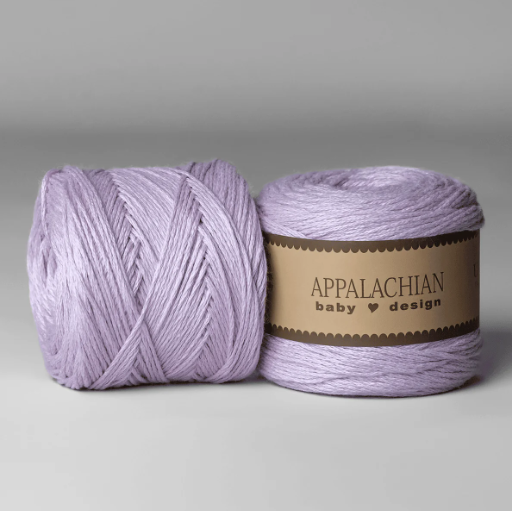
- Project Type: What will you be making? Softer and more flexible yarns like cotton and alpaca are great for apparel. For blankets or rugs, go for a durable yarn like acrylic or wool blends.
- Desired Texture and Look: Weight and texture of yarn affect the appearance of the design. Fine or fingering yarns are great for lightweight, delicate work. Bulky or super bulky yarn is perfect in thickness for something very structured.
- Climate and Purpose: If it’s for warm weather, go with cotton or bamboo: places that offer breathability. For pieces of work for cold weather, wool or acrylic are your choices for insulation.
- Skill Level: Some yarns are best for beginners: smooth, medium weighted, and little texture to handle.
- Care Requirements: How much care is your project going to require? Easy-care yarns, mostly acrylics or some blends, are good for daily use, while some delicate fibers may be hand wash only.
Evaluating Your Project Needs: Cotton or Acrylic?
While deciding between cotton and acrylic yarns for your project, one must weigh the disparate qualities against the restrictions prescribed by own necessities. Being a natural fabric, cotton yarn stands high on breathability and durability; hence it goes well with items that undergo frequent washes or are required to resist wear-and-tear such as dishcloths, summer garments, or baby items. It’s also highly absorbent, which makes it fit for projects that have to absorb moisture while, in its lack of elasticity, might be a hindrance in some cases where the project must retain stretchability, such as in some of the fitted pieces.
Acrylic yarn, meanwhile, being a synthetic alternative, is lightweight, price-effective, and available in an infinite variety of colors and textures. Resistance against moisture, mildew, and fading makes it a favorable choice when crafting outdoor or varying climatic condition-friendly projects. Acrylic, on the other hand, does allow more warmth than cotton and, hence, is apt for winter clothing and blankets. Although its synthetic nature might pose a hindrance to various types of applications due to food-breathing-down and utter discomfort.
Tips for Selecting Between Acrylic Yarn and Cotton Yarn
- Consider Usage Frequency and Care Requirements
- Evaluate the Texture and Comfort Needs
Generally, acrylic yarn has a synthetic feeling; however, one can find good varieties that are softened. They can give itchy sensations to those with sensitive skin. Cotton yarn is naturally soft, breathable, and hypoallergenic and is perfect for skin-conscious uses and applications such as garments or washcloths. Thread comfort should more often than not favor cotton.
- Analyze Project Climate Considerations
Its insulation capacity makes acrylic yarn tailored for winter projects. Warm from the heat of the project: scarves, jumpers, or mittens manufactured in acrylic fiber. On the contrary, cotton fiber is rather lightweight while its moisture-absorbent characteristics keep the wearer cool during the warm season. Cotton is probably an all-time classic archive for warm-weather garb or home needs like dishcloths and adornments.
- Assess Color Versatility and Vibrancy
Known for being able to bear bright and fade-resistant colors, acrylic yarn will allow you to work in practically any color you want for your signature project. Cotton yarn also does have color varieties, but after several washes or exposure to direct sunlight, natural fibers do sometimes appear yet a bit subdued. If really keeping colors bright and vivid is one of your main focuses, acrylic yarn could definitely work in your favor.
Reference Sources
-
Warping Parameters Influence on Warp Yarns Properties: This study examined the tensile strength and elongation of yarns made from cotton, spun polyester, and polyacrylic under varying warping conditions.
-
Antibacterial and Comfort Properties of Bamboo and Cotton Fabrics: While primarily focused on bamboo and cotton, this study highlighted that cotton fabrics treated with zinc oxide showed improved antibacterial properties.
-
Comfort-Related Properties of Cotton-Acrylic Knitted Fabrics: The study revealed that increasing the acrylic fiber ratio in cotton-acrylic blends enhanced wicking abilities and drying rates. Coarser yarns improved wicking, while finer yarns dried faster.
Frequently Asked Questions (FAQs)
Q: What is the main difference between acrylic yarn and cotton yarn?
A: The main difference lies in their composition; acrylic yarn is a synthetic fiber while cotton yarn is made from the fibers of the cotton plant. This affects their texture, durability, and how they behave in different yarn projects.
Q: Is acrylic yarn better for crochet than cotton yarn?
A: It depends on the type of yarn for your crochet project. Acrylic yarn is often chosen for its affordability and range of colors, while cotton yarn is preferred for its breathability and natural feel, especially in warmer weather.
Q: Can I use acrylic yarn for a cotton project?
A: Yes, you can use acrylic yarn for a cotton project, but keep in mind that the finished item may not have the same qualities as one made with cotton yarn. If you are looking for a soft, breathable fabric, cotton yarn is a better choice.
Q: What are the advantages of using acrylic yarn vs cotton yarn?
A: Acrylic yarn is lightweight, often more durable, and resistant to moths and mildew, making it suitable for a variety of projects. In contrast, cotton yarn is absorbent and provides a nice drape for summer garments but may require more care.
Q: How do I decide between acrylic vs cotton yarn for my next crochet project?
A: Consider the project’s purpose and the desired characteristics of the finished item. For items that need to be durable and easy to wash, acrylic yarn is a great option. For projects requiring breathability and a natural feel, cotton yarn is preferable.
Q: Can I mix cotton and acrylic yarn in one project?
A: Yes, you can mix cotton and acrylic yarn to create unique textures and effects. A cotton blend can provide the benefits of both fibers, giving you a versatile yarn for your crochet project.
Q: What should I know about stitch definition when comparing acrylic and cotton yarn?
A: Cotton yarn tends to have a better stitch definition due to its structure, making it suitable for intricate patterns. Acrylic yarn may not hold shapes as well, but it is often easier to work with for beginners.
Q: Are there any specific projects that are better suited for acrylic yarn vs cotton yarn?
A: Yes, projects like blankets and toys may benefit from the durability of acrylic yarn, while items like summer tops or dishcloths are better made with cotton yarn for its absorbency and softness.
Q: How does the cost of acrylic yarn compare to cotton yarn?
A: Generally, acrylic yarn is less expensive than cotton yarn, making it a popular choice for budget-conscious crafters. However, cotton yarn can offer superior quality for certain projects.








